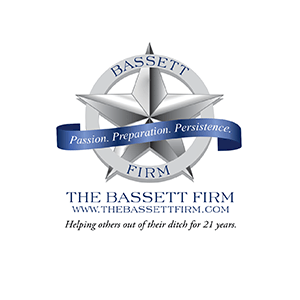The Department of Transportation (DOT) has established new regulations for drug and alcohol testing that pertains to CMV drivers. If your diver is governed by the Federal Motor Carrier Safety Regulations (FMCSR), he/she is subject to pre-employment drug and alcohol screening, as well as random testing, reasonable-suspicion testing, and mandatory post-accident testing.
Pre-employment Screening
Before a driver can be hired to perform any safety-sensitive functions, including driving a commercial motor vehicle, he must undergo drug and alcohol testing. This is mandatory pre-employment screening. The employer must receive verified negative results from that testing before proceeding with employment. §382.301(a).
However, there are some limited exceptions to this requirement. An employer is not required to administer a drug and alcohol test if the driver has participated in a similar testing program that meets the FMCSR requirements within the previous 30 days and while participating in that program he either was tested for controlled substances within the past six months or participated in the random testing program for the previous 12 months. §382.301(b). If the driver meets those requirements, and the employer ensures that no prior employer of that driver has records of a violation of this rule, then the driver is not required to undergo pre-employment screening. Id. However, it may be best practice to test all new drivers before allowing them to perform any safety-sensitive functions.
Random Testing
The requirement of random drug and alcohol testing is going to depend on the number of drivers that an employer has, and the testing required is different for drug testing than it is for alcohol testing. In any given year, each employer must conduct random alcohol testing of its drivers that is at least 10% of the average number of driver positions. §382.305. The rate for drug testing is significantly higher. In any given year, random drug testing must be 25% of the average number of driver positions. Id. However, these numbers could change in the coming years based on the reported violation rate for the industry. Thus, the more violations that occur, the more likely it is that the number of required random testing will increase. To confirm compliance with the random testing, it is important to keep up with the Federal Register. Any new minimum annual percentage rates for testing apply starting January 1 of the calendar year following the publication in the Federal Register. §382.305(c).
Reasonable-Suspicion Testing
The FMCSR also requires employers that have a reasonable suspicion that a driver is under the influence, to test that driver for drugs or alcohol. The employer’s determination that reasonable suspicion exists must be based on specific, contemporaneous, articulable observations concerning the appearance, behavior, speech, or body odors of the driver. §382.307(a)-(b). However, this determination cannot be made by anyone in the company, it must be made by a supervisor or company official who is trained in accordance with these rules, specifically §382.603. §382.307(c). Additionally, the observations made in determining that there is reasonable suspicion must be made during, just before, or just after the period of the work day that the driver is required to be in compliance. §382.307(d). So, anytime that a driver is actually driving his/her CMV, or right before or after that, they are subject to being tested based on reasonable suspicion.
If the determination is made to test a driver, the person who made the determination shall not conduct the drug or alcohol test. §382.307(c). But, the test really should be conducted within two hours following the determination. Otherwise, the employer must prepare and maintain a file on record explaining why that driver was not promptly tested. §382.307(e)(1).
Post-accident Testing
Alcohol testing must be done as soon as practicable following an accident involving a CMV on a public road. An alcohol test must be done by each surviving driver who either:
- was performing safety-sensitive functions if the accident involved the loss of a human life; or
- received a citation within eight hours of the accident for a violation in connection with the accident, if that accident involved bodily injury to any person that received medical treatment away from the scene or one of the vehicles involved was disabled and towed away. §382.303(a).
Drug testing must also be done as soon as practicable following an accident involving a CMV on a public road. A drug test must be done by each surviving driver who either:
- was performing safety-sensitive functions if the accident involved the loss of a human life; or
- received a citation within thirty-two hours of the accident for a violation in connection with the accident, if that accident involved bodily injury to any person that received medical treatment away from the scene or one of the vehicles involved was disabled and towed away. §382.303(b).
So, anytime that there is a human fatality because of an accident, all surviving drivers must be tested for drugs and alcohol. If there was a bodily injury of any sort that was followed by medical treatment away from the scene, all surviving drivers must be tested if a citation was issued. If there was disabling damage to any vehicle that required it to be towed, and a citation was issued, then all surviving drivers must be tested. A driver who is subject to post-accident testing shall remain readily available for such testing or may be deemed to have refused to submit testing. §382.303(e). Now, if any drug or alcohol testing was conducted by Federal, State, or local officials, the results of such tests do meet the requirements of post-accident testing so long as the tests conform to the applicable requirements and the results are obtained by the employer. §382.303(g).
Conforming to these testing requirements is critical. This is critical not only for compliance with mandated regulations, but also for the safety of our roads and for protection of employers in future litigation.

